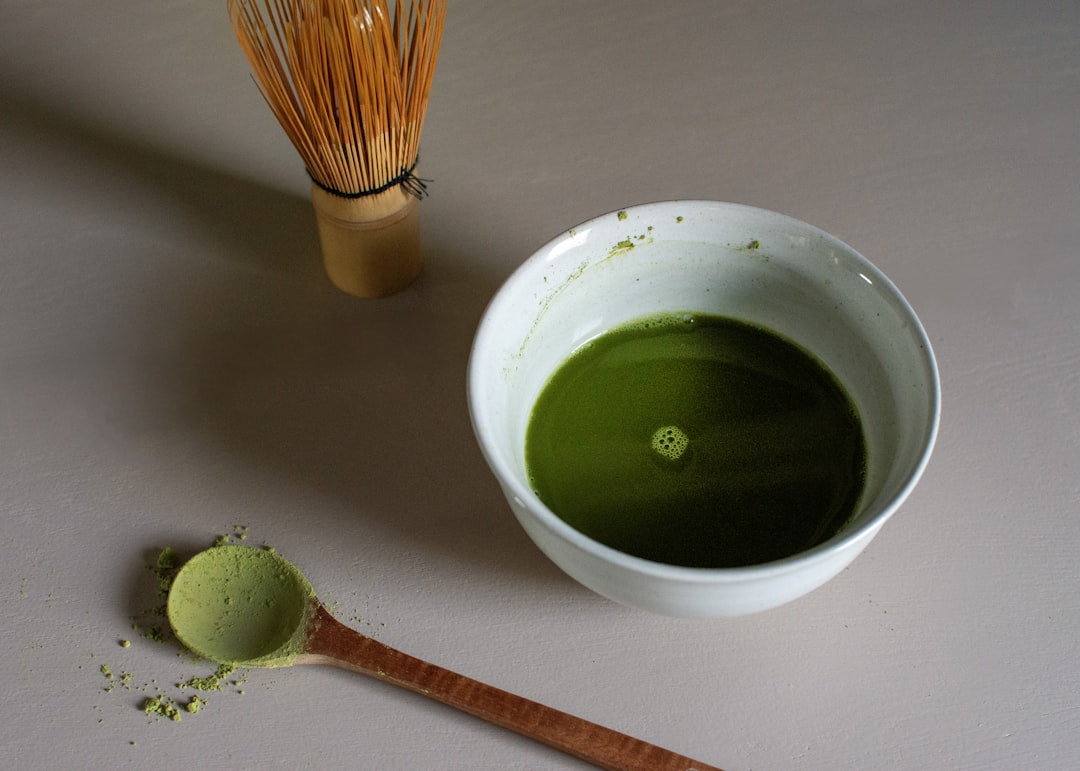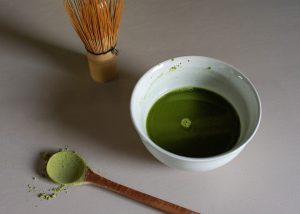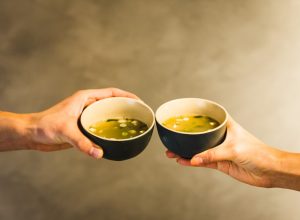Elegance in a Cup: The Art of Japanese Matcha and Green Tea
Discover the elegance of Japanese matcha and green tea. Uncover their unique art and benefits. Sip sophistication today!
The Origins of Matcha Tea
Historical Background
Matcha tea, a finely ground powder of specially grown and processed green tea leaves, has its origins deeply rooted in ancient China. During the Tang Dynasty (618–907 AD), tea leaves were steamed and formed into bricks for storage and trade.
This method was later adopted by Japanese monks who traveled to China for religious studies.
In the 12th century, a Japanese Zen Buddhist monk named Eisai brought the practice of making powdered tea back to Japan. Eisai is credited with popularizing the tea in Japan, where it eventually evolved into the matcha we know today.
Over time, the cultivation and preparation of matcha became a central part of Japanese culture, particularly within the Zen Buddhist tradition.
Introduction to Japan
Upon its introduction to Japan, matcha was initially consumed by the upper classes and samurai warriors, who valued its energizing properties. The tea was also used in religious rituals by monks who appreciated its ability to enhance focus during meditation.
By the 15th century, matcha had become an integral part of the Japanese tea ceremony, or “chanoyu,” which emphasized aesthetics, simplicity, and the meditative qualities of tea preparation and consumption.
The tea ceremony played a significant role in shaping the cultural and spiritual life of Japan, with matcha at its core.
Cultivation and Production
Matcha is made from the leaves of the Camellia sinensis plant, the same plant used for other types of green tea. However, the cultivation process for matcha is unique.
Several weeks before harvest, tea plants are shaded from direct sunlight, which increases chlorophyll production and enhances the amino acid content of the leaves. This shading process gives matcha its vibrant green color and rich flavor.
After harvesting, the leaves are steamed, dried, and sorted for quality.
The highest quality leaves, known as “tencha,” are then deveined and destemmed before being stone-ground into a fine powder. This meticulous process ensures that matcha retains its distinct taste and nutritional benefits.
Health Benefits of Green Tea
Rich in Antioxidants
Green tea, particularly matcha, is renowned for its high concentration of antioxidants.
These compounds help combat oxidative stress in the body, reducing the risk of chronic diseases. The specific type of antioxidants found in green tea, known as catechins, are particularly effective in neutralizing free radicals and preventing cell damage.
Boosts Brain Function
Green tea contains caffeine, which is known to enhance brain function.
While it provides a milder boost compared to coffee, it is often enough to improve alertness and concentration. Additionally, green tea contains the amino acid L-theanine, which works synergistically with caffeine to improve brain function, enhancing memory and attention.
Supports Weight Loss
Regular consumption of green tea can aid in weight management.
The catechins in green tea help increase metabolism and fat burning, particularly during exercise. Studies have shown that green tea can enhance the body’s ability to burn calories, making it a popular choice for those looking to shed some pounds.
Improves Heart Health
Drinking green tea regularly can positively impact heart health.
It helps lower bad cholesterol levels and improves the ratio of good to bad cholesterol. The antioxidants in green tea also promote better blood flow and reduce the risk of heart disease by preventing the oxidation of LDL cholesterol.
Enhances Skin Health
Green tea is beneficial for the skin, thanks to its anti-inflammatory and antioxidant properties.
It can help reduce acne and improve skin elasticity. The polyphenols in green tea protect against UV damage, thus reducing the signs of aging and promoting a more youthful complexion.
Supports Immune Function
Green tea contains compounds that can enhance immune function.
The antioxidants and amino acids in green tea help the body fight off infections and strengthen the immune system. Regular consumption can lead to a reduced risk of common illnesses, such as colds and flu.
How to Prepare Matcha Properly
Choosing the Right Matcha
When preparing matcha, it’s crucial to select a high-quality powder.
Look for vibrant green matcha, which indicates freshness and high chlorophyll content. Ceremonial grade matcha is ideal for drinking, while culinary grade is better suited for cooking and baking.
Gathering Your Tools
To prepare matcha, you’ll need a few essential tools: a matcha bowl (chawan), a bamboo whisk (chasen), a bamboo scoop (chashaku), and a fine sieve.
These tools help create a smooth, frothy tea and enhance the traditional experience.
Sifting the Matcha
Before whisking, sift the matcha powder through a fine sieve into your bowl. This step prevents clumping and ensures a smooth consistency.
Use the chashaku to measure 1-2 teaspoons of matcha, depending on your taste preference.
Heating the Water
Boil fresh, filtered water and let it cool to about 175°F (80°C). Using water that’s too hot can scorch the matcha, resulting in a bitter taste.
It’s important to use the right temperature to preserve the delicate flavors of the tea.
Whisking the Matcha
Add a small amount of the cooled water to the sifted matcha in the bowl. Use the chasen to whisk the mixture in a zigzag motion until it becomes a thick paste.
Gradually add more water, about 2-3 ounces, while continuing to whisk briskly. Aim for a frothy layer on top with no visible lumps.
Enjoying Your Matcha
Once whisked to perfection, your matcha is ready to enjoy.
Sip directly from the bowl, savoring the rich, umami flavors. For added taste, some people like to pair matcha with traditional sweets or light snacks, balancing the tea’s natural bitterness.
Exploring Different Types of Green Tea
Matcha
Matcha is a finely ground powder made from specially grown and processed green tea leaves.
Unlike other green teas, matcha involves consuming the entire leaf, which results in a more concentrated form of nutrients. This vibrant green tea is renowned for its rich flavor and high antioxidant content.
Traditionally used in Japanese tea ceremonies, matcha has gained popularity worldwide for its health benefits and versatility in culinary applications.
Preparing matcha involves whisking the powder with hot water until it becomes frothy. This method ensures that the drinker ingests all the nutrients, including a significant amount of catechins, which are powerful antioxidants.
Matcha is also known for its calming effects, attributed to the amino acid L-theanine, which promotes relaxation without drowsiness.
Sencha
Sencha is one of the most popular types of green tea in Japan. It is made from the top leaves of the tea plant, which are steamed, rolled, and dried.
This process preserves the tea’s natural flavor and nutrients. Sencha is characterized by its refreshing, grassy taste and slightly astringent finish.
The steaming process helps to retain its vibrant green color and aromatic profile.
Sencha is often enjoyed hot or cold, making it a versatile choice for tea enthusiasts. It is rich in vitamin C and catechins, which contribute to its numerous health benefits, including boosting metabolism and supporting cardiovascular health.
Gyokuro
Gyokuro is a premium variety of green tea known for its delicate flavor and high-quality leaves.
The tea plants are shaded from sunlight for several weeks before harvesting, which increases the chlorophyll content and results in a sweeter, more umami-rich flavor. This shading technique also enhances the levels of L-theanine, contributing to gyokuro’s smooth and mellow taste.
Due to its unique cultivation process, gyokuro is often more expensive than other green teas.
It is typically brewed at a lower temperature to preserve its subtle flavors and is enjoyed by tea connoisseurs for its complex and refined taste profile.
Hojicha
Hojicha is a roasted green tea that offers a distinct flavor profile compared to other green teas. The roasting process gives hojicha its characteristic reddish-brown color and a toasty, caramel-like aroma.
This roasting reduces the caffeine content, making it a popular choice for evening consumption or for those sensitive to caffeine.
Hojicha’s mild flavor and low astringency make it a comforting and soothing beverage. It can be enjoyed hot or cold and is often paired with meals due to its ability to cleanse the palate.
Its unique taste and aroma have also made it a popular ingredient in various culinary creations, such as hojicha-flavored desserts and lattes.
FAQ
Q1: Is there a difference in steeping temperatures for matcha and green tea?
A1: Yes, there is a significant difference in how matcha and green tea are prepared, especially concerning steeping temperatures. Traditional green tea, such as sencha or gyokuro, is typically steeped at temperatures ranging from 160°F to 180°F (70°C to 80°C). This lower temperature helps preserve the delicate flavors and prevents the tea from becoming bitter. On the other hand, matcha is not steeped like loose-leaf green tea. Instead, matcha powder is whisked into hot water, usually at a slightly lower temperature of around 175°F (80°C). Using boiling water can scorch the matcha, leading to a bitter taste and loss of its vibrant color. Therefore, controlling the water temperature is crucial for both matcha and green tea to enjoy their full flavor profiles.
Q2: Are there different varietal traits between matcha and other types of green tea?
A2: Absolutely, matcha and other types of green tea have distinct varietal traits due to differences in cultivation and processing. Matcha is made from shade-grown tea leaves, primarily from the Camellia sinensis plant, which are covered for about 20-30 days before harvest. This shading process increases chlorophyll levels, giving matcha its vibrant green color and rich umami flavor. The leaves are then stone-ground into a fine powder. In contrast, other green teas like sencha are grown in full sunlight, which results in a different flavor profile—often more astringent and less creamy than matcha. Additionally, the processing methods vary; for example, sencha leaves are steamed, rolled, and dried, while matcha involves de-stemming and de-veining before grinding. These differences contribute to the unique characteristics and taste profiles of each tea.
Q3: How should matcha and green tea be stored to maintain their freshness?
A3: Proper storage is crucial for maintaining the freshness and quality of both matcha and green tea. Matcha, being a finely ground powder, is particularly sensitive to light, air, and moisture. It should be stored in an airtight container, preferably opaque, to protect it from light and air exposure. Ideally, matcha should be kept in a cool, dark place, such as a refrigerator, to preserve its vibrant color and flavor. Green tea leaves, while slightly more resilient than matcha, also benefit from similar storage conditions. They should be kept in a sealed container away from light, heat, and moisture. Both matcha and green tea can lose their flavor and aroma if exposed to air and humidity, so it’s essential to reseal the containers tightly after each use. Proper storage ensures that both matcha and green tea retain their optimal taste and nutritional benefits for as long as possible.
Takeaway
Indulge your senses in a symphony of flavors and aromas with our exquisite range of artisanal teas. Dive into a world of discovery as you explore a myriad of tea varieties waiting to be savored. Unwind and immerse yourself in the art of traditional brewing, allowing each delicate leaf to unfold its full potential. Visit our online tea shop and elevate your tea experience to new heights. Let the tranquility of a perfectly brewed cup transport you to a place of pure bliss. Embrace the elegance of tea culture and embark on a journey of taste and refinement. Explore, brew, and savor the essence of fine teas with us today.
References
- The World Green Tea Association (2023) noted a 28% global increase in matcha consumption over the last 5 years.
- The National Institutes of Health (NIH) states that catechins in matcha may support cardiovascular health.
- Encha provides USDA organic matcha directly sourced from sustainable farms in Uji, Japan.
- Marukyu-Koyamaen is a leading Uji matcha producer supplying ceremonial-grade tea for over 300 years.





Comments